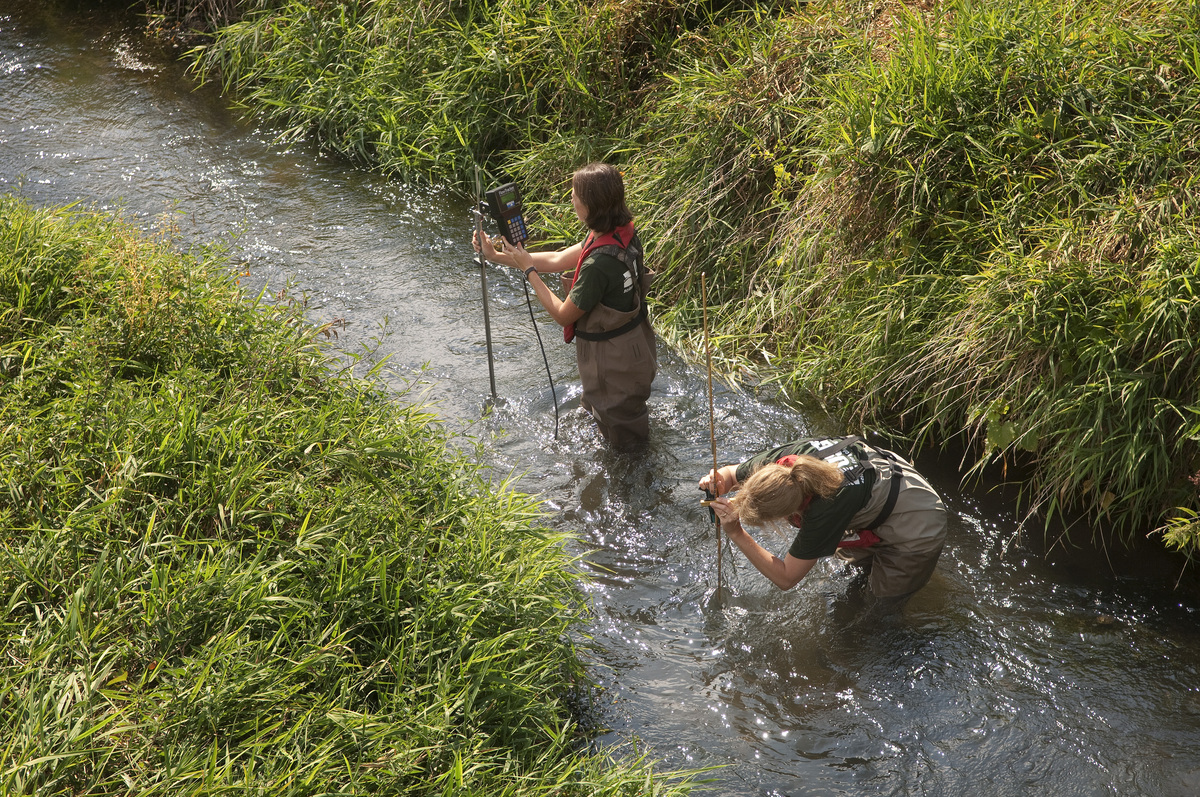Pecatonica without the ‘P’: Project cuts phosphorus levels in river

United States Geological Survey researchers analyze a recently restored stream in the Pecatonica River. A seven-year pilot project has helped to reduce the amount of phosphorus entering the southwestern Wisconsin river.
Photo: Mark Godfrey/The Nature Conservancy
Conservation experts and farmers alike are rather pleased with the news out of southwestern Wisconsin.
A seven-year pilot project in the 12,000-acre Pleasant Valley subwatershed of the Pecatonica River has helped to reduce the amount of phosphorus and sediment entering the river after major storms by more than a third.
The project involved changing practices on just 10 of the valley’s 61 farms. Certain practices, such as reducing tillage and planting crops that leave more residue to protect the soil, caused the estimated annual amounts of phosphorus and sediment entering the river to drop by 4,400 pounds and 1,300 tons, respectively.
“We can say with 90 percent confidence that this project made a real reduction in the phosphorus losses.”
Laura Ward Good
“We can say with 90 percent confidence that this project made a real reduction in the phosphorus losses,” says Laura Ward Good, a soil scientist at the University of Wisconsin–Madison College of Agricultural and Life Sciences (CALS). “Farmers who changed their management practices reduced their estimated phosphorus and sediment losses by about half.”
The project was launched in 2006 by a multi-institutional team that included University of Wisconsin–Madison scientists, public agencies, local farmers and The Nature Conservancy.
Researchers collected baseline data on water quality in the Pecatonica south of Pleasant Valley and a nearby watershed that served as a control. Team members then identified high-risk fields and worked with landowners to assess the likely impacts of switching practices in selected fields — not just on runoff, but also on yields, expenses, feed supplies and other factors.
A key tool for the team was SnapPlus, a software program developed at CALS that estimates each field’s potential for phosphorus runoff under various management scenarios.
“In many cases the higher risk areas were fields on steep slopes, where silage had been grown in consecutive years so there wasn’t much crop residue to hold the soil, and where soil phosphorus levels were high — possibly because past manure applications had supplied more phosphorus than crops required,” Good says.
“The trick is to give farmers the time to adapt, to search among the best management practices to see how they fit into their systems.”
Jim Leverich
The results indicate that farmers can make changes without reducing their bottom lines if the practices are tailored to individual needs and growers can proceed gradually. For example, farmers who don’t till can still see high production from their acres, though that approach requires a closer attention to detail and leaves little room for mistakes, says UW-Extension specialist Jim Leverich, the project’s ongoing farm research coordinator.
“The trick is to give farmers the time to adapt, to search among the best management practices to see how they fit into their systems,” Leverich says. “If they have time to utilize the practice on a small scale first, they’ll start to see the advantages and maybe start to use it on more acres.”
Subscribe to Wisconsin Ideas
Want more stories of the Wisconsin Idea in action? Sign-up for our monthly e-newsletter highlighting how Badgers are taking their education and research beyond the boundaries of the classroom to improve lives.




